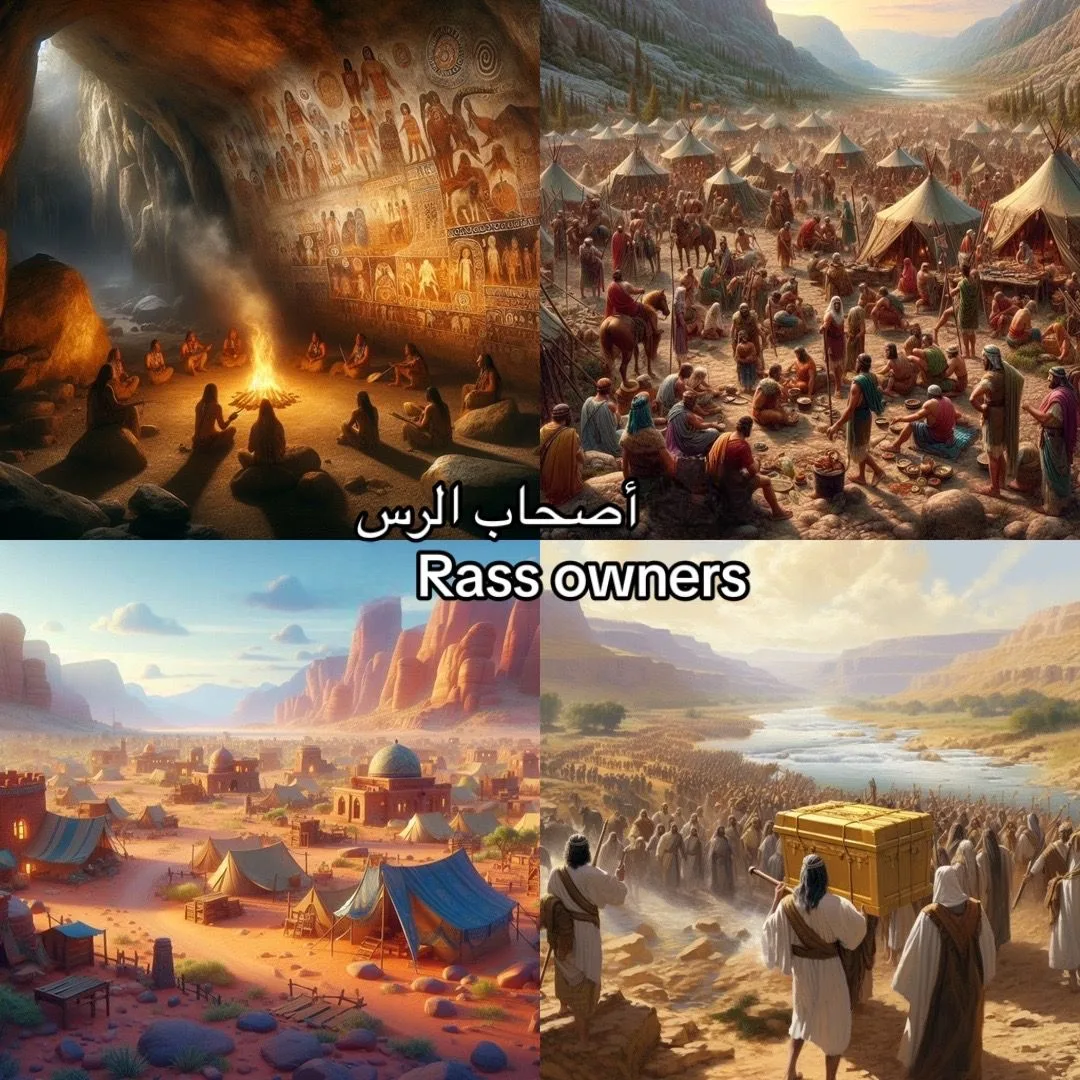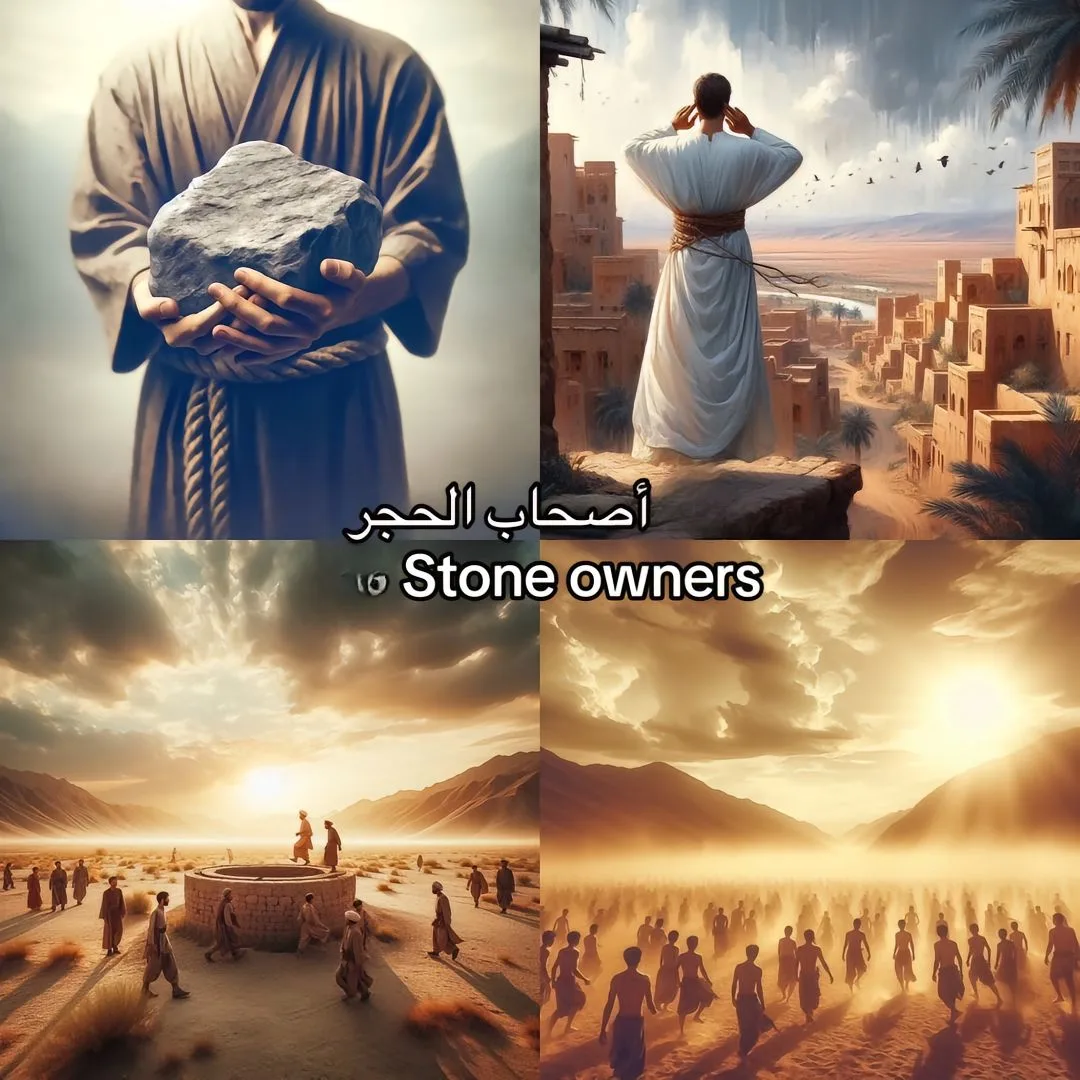The Quran is filled with fascinating characters whose stories captivate the imagination.
Some are well-known, while others remain shrouded in mystery.
Here, we explore ten mysterious figures mentioned in the Quran, whose identities and stories leave much to be speculated upon.
Dhul-Kifl
- Surah Sad (38:48), Surah Al-Anbiya (21:85-86)

Dhul-Kifl is mentioned in Surah Sad (38:48) and Surah Al-Anbiya (21:85-86) as a righteous servant of Allah.
He is recognized for his steadfastness and patience in the face of trials. His full story, however, is not elaborated on in the Quran, which leaves many details of his life shrouded in mystery.
Why it’s mysterious:
Dhul-Kifl’s identity and whether he was a prophet or simply a righteous man is not clearly stated in the Quran, leading to speculation and uncertainty about his life and role.
The People of Aad
- Surah Al-Ahqaf (46:21-22), Surah Ash-Shams (91:11-15)

The people of Aad are mentioned in Surah Al-Ahqaf (46:21-22) and Surah Ash-Shams (91:11-15) as a powerful civilization that was destroyed by a mighty storm after rejecting the message of the prophet Hud AS.
Why it’s mysterious:
Although their destruction is mentioned in the Quran, the exact location of the Aad people’s civilization and their fate remains a mystery. Their story is known, but key details about their society and environment are unclear.
3. The People of Rass
- Surah Al-Furqan (25:38), Surah Al-Qamar (54:31)

The people of Rass (Thamud) are mentioned briefly in Surah Al-Furqan (25:38) and Surah Al-Qamar (54:31). They were punished for their disobedience and rejection of the prophets. Their exact location and the nature of their sin are not clearly detailed.
Why it’s mysterious:
The Quran gives very few details about the people of Rass. Their precise location and full history are unknown, making them one of the most enigmatic groups in Islamic tradition.
4. The Owner of the Two Heavens
- Surah Al-Rahman (55:33)

The “Owner of the Two Heavens” is a term mentioned in Surah Al-Rahman (55:33). It refers to Allah’s sovereignty over the heavens and the earth. The term is often interpreted as referring to the vastness and grandeur of the universe.
Why it’s mysterious:
The concept of the “two heavens” is not explained in detail, which leaves room for speculation. The term could refer to various interpretations of celestial realms, but its exact meaning is left unclear in the Quran.
5. The People of the Cave
- Surah Al-Kahf (18:9-26)

The story of the People of the Cave is recounted in Surah Al-Kahf (18:9-26). They were a group of young men who sought refuge in a cave to escape persecution and were miraculously put to sleep by Allah for many years.
Why it’s mysterious:
While the story is well-known, there are many unanswered questions about the identity of the People of the Cave, including the exact time period and location of their story. Their experience of sleeping for centuries remains one of the Quran’s greatest mysteries.
6. Ashab al Hijr
- Surah Al-Hijr (15:80-84)

Surah Al-Hijr (15:80-84) mentions the “Owners of the Stone,” a people who lived in a valley known for its rock-hewn dwellings.
Why it’s mysterious:
The mention of a once-thriving community that lived in rock-cut homes, now destroyed and forgotten, without clear geographical or historical context, makes them a mysterious group.
7. Al-Khidr
- Surah Al-Kahf (18:60-82)

Surah Al-Kahf (18:60-82) alludes to a mysterious figure referred to as Al-Khidr, who is associated with eternal wisdom. While not directly named in the Quran, Al-Khidr’s presence is significant in Islamic tradition.
Why it’s mysterious:
Al-Khidr is never explicitly named in the Quran, but his story with Prophet Musa (AS) and the deep, hidden wisdom he imparts makes him an enigmatic and fascinating figure.
His mystical journey and guidance have been the subject of speculation and interpretation for centuries.
Dhu al-Qarnayn
- Surah Al-Kahf (18:83-98)

Dhu al-Qarnayn is a prominent figure in Surah Al-Kahf (18:83-98). Known for his travels and accomplishments, he built a barrier to contain the people of Gog and Magog. His story is one of great power and righteousness.
Why it’s mysterious:
While Dhu al-Qarnayn is depicted as a powerful and righteous figure, his true identity remains unclear. Scholars have speculated that he might be a historical ruler, but the Quran does not provide enough detail to conclusively determine his exact identity.
The Elephant Owners
- Surah Al-Fil (105:1-5)

Surah Al-Fil (105:1-5) mentions the Ashab al-Fil, or “The Owners of the Elephant,” referring to the army of Abraha, the Abyssinian ruler who attempted to destroy the Kaaba with an army of elephants.
Why it’s mysterious:
The story is shrouded in mystery because it involves the miraculous intervention of Allah, where the elephants were thwarted by a flock of birds that pelted them with stones, safeguarding the Kaaba from destruction.
Discover more from The Islamic Information
Subscribe to get the latest posts sent to your email.












